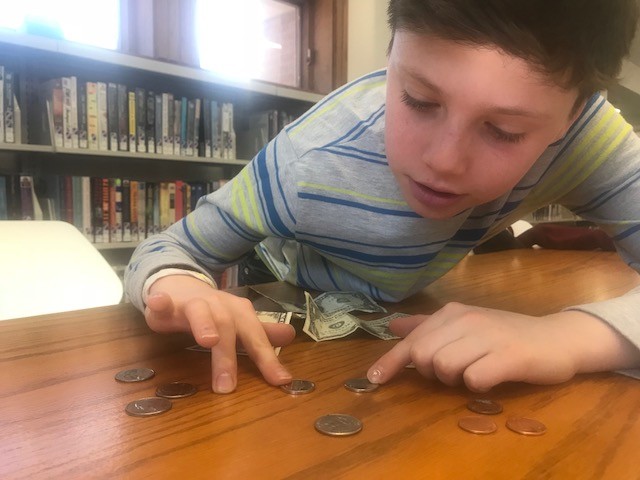
Family Financial Literacy
SPENDING DETECTIVE! An Activity to Understand the Value of Money:
It is easy for parents to fall into the trap of keeping their kids far away from the financial realities of family life. This gives children the impression that things just "appear" at home and that their parents have an inexhaustible supply of money with which to buy these things (if they think about it at all).
The problem, of course, is that this approach never really teaches your children how to be careful with their money and cognizant of its value. (US News and World report, Nov. 2017)
Do you want your child to begin to appreciate how much you spend to buy food, electricity, water and toys? This can be achieved through family financial literacy.
It can be extremely powerful to start talking to you child about finances. Understanding how much everything costs is the first step to spending money wisely and saving money for future financial needs.
Financial literacy is one of the most valuable lessons parents can teach children to prepare them for independence. The National Endowment for Financial Education (NEFE) has a wonderful online financial literacy curriculum, Koala Coach recommends for EVERYONE!
Financial Literacy Activity 1: SPENDING DETECTIVE:
Become a spending detective with your child! This online worksheet guides you to record expenses from your bank and credit card statements. It is an effective activity to see how your money is being spent. Recording the expenses from a bank and or credit card statement into three categories (regular bills, needs, wants) works on math skills, reading skills, writing skills and financial literacy! This Spending Detective Worksheet from NEFE's online financial literacy courses will help you explain to your children how much money is needed throughout the month. Understanding how hard you work to provide for your child is a powerful lesson.
Modifications:
PRESCHOOL: Find the biggest expense on the bank or credit card statement. Look at the numbers carefully that make up this amount. Work on reading that number. Talk about how big that number is.
LOWER ELEMENTARY: Find two expenses on the bank statement to review with your child. One expense should be a NEED such as electricity or water. The other expense should be a WANT such as toys or a trip to the zoo. Compare the two amounts. Which amount is more? Which amount is less?
UPPER ELEMENTARY: Fill out the detective worksheet and add up the expenses in each column. Multiply the expenses in the 'regular bills' column to figure out approximately how much will be spent on those expenses over the course of the year. Have a discussion about the differences between 'REGULAR BILLS, 'NEEDS' and 'WANTS'. Make a plan for next month's expenses.
CHALLENGE FOR ALL AGES:
Choose one monthly expense to review again next month such as water or electricity. Compare the amount of this month's electric or water bill to next month's bill. Did the amount stay about the same, is it more or less? If the amount changed, why might that have happened? Challenge: Encourage your child to lower the cost of this bill. Put together a family plan to conserve water or electricity. Make poster reminders to be put up all over the house. Compare the bill on the next month's statement. Was your family able to lower the cost of the bill? Use any extra money that was saved to treat the family to a fun outing like ice cream! Or save the money for a future family need or want.




0 Comments Posted Leave a comment